For much of the Agile community, especially those involved in Agile marketing management, scaling is the topic du jour.
The principles and practices that enable agility for a single team are relatively straightforward. Software developers at least have been making them work for multiple decades now.
But as soon as we start adding additional teams or trying to interface with groups outside our own department, things get real complicated real fast.
For marketers, the complications can feel exponentially more daunting. With so many connections within the organization, marketing departments have far more touch points with internal stakeholders than any software development unit.
As a result, Agile marketing management is just more difficult to scale.
We already need to translate existing Agile frameworks to fit our unique ways of working. Now those of us in large companies also have to sort out the ways to get lots of teams to work together?!
Unfair.
Complicated/unfair or not, implementing agility across multiple teams — and multiple functions — is the blueprint for organizational success in the twenty-first century.
Because of the unique challenges of applying Agile at scale, I’m beginning a new series of articles based on AgileSherpas’ work with our enterprise clients (and my upcoming book Mastering Marketing Agility). I’ll be sharing key success factors, as well as common pitfalls, to help marketers and leaders in large organizations make agility a reality.
But first, we need to lay the groundwork.
This article will explore the unique nature of implementing Agile marketing management at scale. It will also focus on the core best practices that will form the foundation for the rest of the series:
- Designing stable Agile marketing teams
- Piloting safely and effectively
- Measuring the performance of enterprise marketing agility
- Leading the adoption of Agile marketing
- Performance reviews in the Agile enterprise
- Using Agile to manage your Agile transformation
Challenges of Scaling Agile Marketing
Getting a small team of seven or eight people to transform their ways of working isn’t easy.
Even in a small group there are different levels of willingness, experience, and aptitude.
Achieving true high performance, the state in which a team delivers amazing work faster than anyone could have imagined, is tough, even when the team is independent.
I mean, if getting a group of people to work that way were easy, then we wouldn’t need Agile frameworks in the first place.
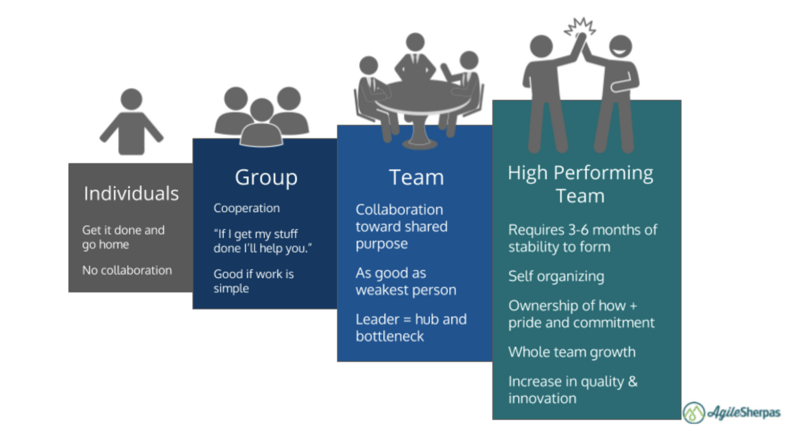
Real agility for a single team is elusive. And then, we add more.
More people, teams, tools, projects, egos, politics — they all become factors that a single Agile team can mostly avoid.
If we were building a new enterprise from scratch, as many natively Agile companies like Spotify and Amazon have done, we’d have a major advantage. We could build teams around Agile values and make their purpose customer-centric.
We’d only hire managers who have an aptitude for coaching, an essential quality for scaling Agile marketing management, rather than a history of command-and-control behavior. All of our technology would also support Agile practices from the start. And so on.
But for most organizations, and certainly for the enterprise marketing groups we help, this is a laughable luxury. They aren’t starting from scratch; they’re trying desperately to transform traditional enterprise marketing norms and ways of working.
So now, in addition to the huge scope of factors that play a role in every team’s Agile effectiveness, we’re also introducing the need to change.
In case you’re not aware, change is hard. Most of us don’t like to do it.
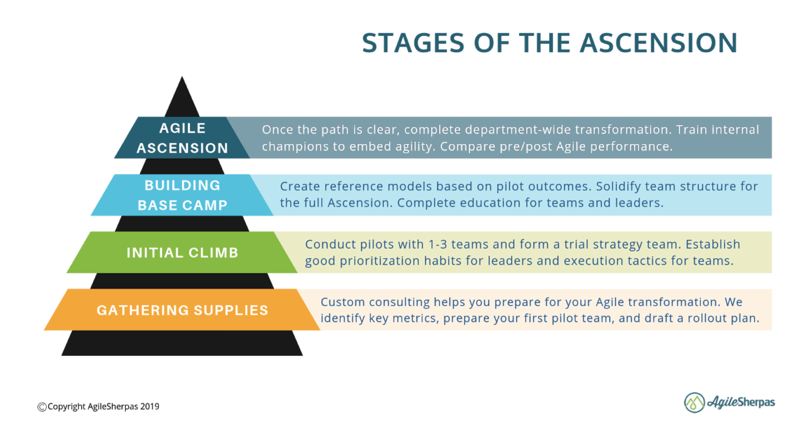
In fact, we’ll go to great lengths to maintain the status quo. Status quo bias is a real phenomenon. One which causes us to latch onto the current state and perceive any change (positive or negative) as a loss.
In a single-team environment, we’d be dealing with that kind of bias with a few people at most. In enterprise marketing management, it could be hundreds or even thousands.
Clearly, we need to approach such an effort with care.
Best Practices for Enterprise Marketing Agility
Many of the best practices outlined here apply to any good scaling effort.
There are some idiosyncrasies within the marketing function that make scaling for us slightly different. I’ll dwell on those both here and in future articles that unpack each of these practices in more detail.
But for now it’s enough to know that if you’re looking to transform marketing as part of a larger push towards business agility across the enterprise, these steps are similar to the ones your colleagues will be (or at least should be) taking in other departments.
I’ll give a brief overview here, and then go into greater detail on each aspect in later articles (which will be linked here directly as they’re published).
Designing Agile marketing teams
I’ve been banging this drum a lot lately. It forms the foundation of much of the organizational design in Mastering Marketing Agility. But the more organizations I work with, the more I realize how important (and unusual) this approach is.
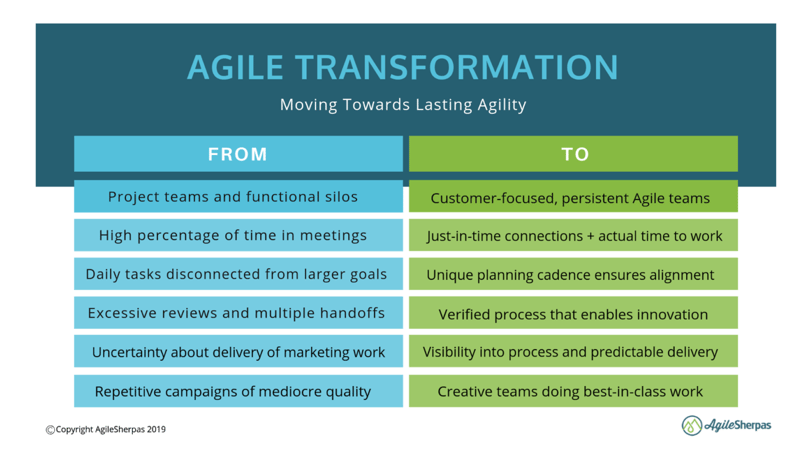
Principle of enterprise marketing agility #1: Use projects at your peril
In the context of traditional enterprise marketing, many, if not most, marketing departments arrange themselves around projects. New work of some kind needs to kickoff, so they bring together a small(ish) group of folks to get it done and call it a project team.
They work together for a while, sometimes a few weeks, sometimes a few months. They have status meetings and review meetings and working meetings and stakeholder meetings, and sometimes they even do work. Then when the project is done they go their separate ways.
Being on "all the teams"
While that’s going on, everybody on that project team is also on other project teams.
Probably quite a few of them.
So each person ends up spending tons of time trying to figure out which of all their projects is really the most important. That’s quite challenging, because everyone involved with marketing management will be quick to tell you that of course theirs is most important and you should go and work on it right this very second.
We can’t even use Agile project management to solve this kind of situation, because even the most basic meetings become huge when scaled across so many projects.
Take daily standup, for instance.
If I’m on six projects and each of them is suddenly magically Agile, they’ll all need to have a daily standup meeting. Now I’m in 90 minutes of meetings every morning before I can even start work.
Not good.
So projects are not the best way to organize ourselves. We need to get focused on the customer instead.
Principle of enterprise marketing agility #2: Customer focus + core KPIs
Instead of projects, group people in such a way that makes them experts on some segment of your customer base.
Maybe that’s a persona, a product line, a stage of the customer journey. Whatever it is, just give them a consistent, customer-centric reason to work together.
Then give them a key metric (or two). This will be used to track how well they’re serving their customer segment.
These two filters should help them focus their work. Further, this will allow them to say no to projects that don’t serve their customer/help their core metric.

It also fixes the common prioritization problem in many enterprise marketing structures by getting people onto a single, stable team and away from the conflicting demands of projects that are all top priority for someone.
Principle of enterprise marketing agility #3: Team leads > functional managers
As you can imagine, we need strong leadership to help navigate this kind of arrangement. Each stable team gets its own Lead to fill this role.
The Lead:
- Sets (and holds) priorities for the team, even in the face of conflicting stakeholder demands.
- Accepts (or rejects) new project requests, using the team’s input if needed.
- Becomes a real leader, not a micromanager who assigns work and does annual performance reviews.
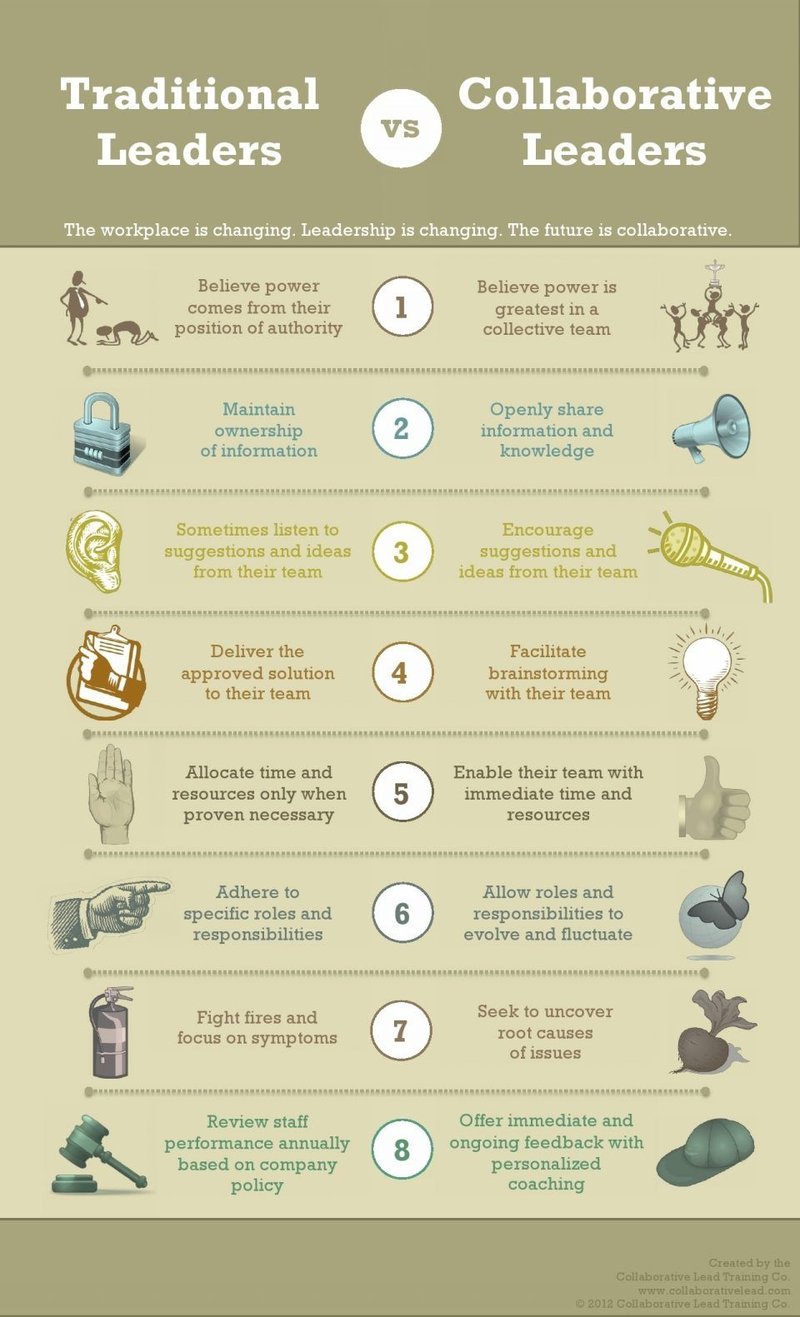
Piloting the right way
Of course we can’t just wave a magic wand and change the structure and leadership for hundreds of people overnight. We need to try out some different team arrangements, learn what aspects of Agile marketing work best for us, then adapt and iterate over time.
In other words, we need to pilot.
When we pilot we pull a subset of a department, division, etc. out of their usual day-to-day operations and turn them into an Agile team. They try out different practices and frameworks, track their progress, and report back.
They’re 100% dedicated to their Agile team, meaning they aren’t also sitting on the same large number of project teams as they usually would.
This is by far the hardest part of piloting, but it’s also something that can make or break your transformation efforts toward enterprise marketing agility.
Part time pilots are NOT a good way to test Agile marketing.
Wait until you can dedicate a group of people entirely to piloting; it’s better to delay than to start with a compromise that will undermine your approach to Agile from the start.
How do you know who should be part of a dedicated group for an Agile pilot? A good way to start is by gathering your marketing managers and making a list of bulkier initiatives that you (as a delivery group) need to get out the door in the next six months.
Identify a departmental initiative with a shared purpose that involves members from various parts of the marketing department, in order to involve more than one facet of the marketing organization.
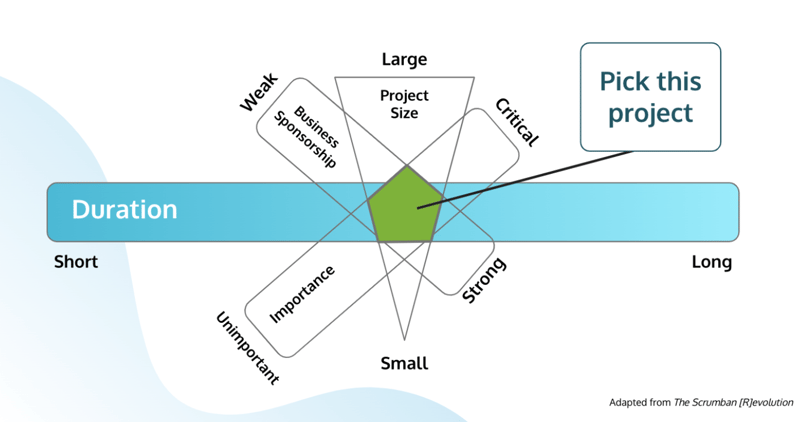
Define the roles that would be needed to execute on the goals of the initiative. When the roles are decided, you then have to map them to actual people that are currently in the organization.
Look for contributors who have just wrapped up a project and have enough tenure in the organization to know the ropes, but a fresh outlook on new processes. Consider both soft and hard skills. You’re looking for team players and yes-people!
Agile Marketing Management
Equally important to the configuration of the individual contributors to the pilot team is their Agile marketing manager.
In Agile marketing management, team leads manage the workflow way more than they manage team members. Managers deal with bureaucracy, slow approval processes, and managing stakeholder demands while empowering the team to take ownership of their tasks and do awesome work.
As a result, managers spend most of their time identifying room for improvement, facilitating effective team meetings, measuring process metrics and boosting the overall agility of the marketing process.
The work of an Agile manager can be split up into three main categories of activities: reviewing, measuring, and facilitating.
Reviewing Individual Contributions on Agile teams
As we start talking about redesigning teams based on customers and core KPIs, a quick follow-up question is always about career development and performance reviews.
If I’m a content marketer but I don’t technically work for — or even with — my content marketing boss, who decides if I get a raise? If I can’t ever lead a project because there aren’t project teams, how will I prove my value and earn a promotion?
There are several ways to start addressing these questions. Details on these will be part of the follow up piece, but there are some guiding principles for us to keep in mind:
- Agile marketing departments focus on team success, not individual performance.
- A holistic view of someone’s contributions from multiple sources is preferable to one boss’s perspective.
- Just as we seek frequent feedback on campaign performance, we should work closely with individuals to provide input outside annual reviews.
- Human resources is a good fast follow as Agile expands outside the software department.
Ways to start addressing individual performance
The topic of evaluating individual performance in an Agile team is still an evolving conversation, one in which Agile marketing managers have a big part. In practice, managers are already moving towards incorporating proven techniques to develop an Agile performance reviewing process:
- More frequent 1-on-1 feedback sessions between each contributor and their team lead
- Shortening the performance evaluation cycle to become weekly or monthly
- 360 evaluation from teammates as well as managers
The 1-on-1 meeting is among the best ways to provide feedback to an employee. When you hold it frequently (e.g. on a monthly basis), it serves as a private feedback loop between individual contributors and their leads. It allows you to discuss performance, exchange ideas, build better rapport, and go over existing concerns and problems.
In addition, it’s a perfect opportunity to learn more about a person.
During the meeting, you are encouraged to discuss their plans and aspirations for career development and help them achieve continuous improvement.
Shortening the performance evaluation cycle is also an essential element of nurturing an Agile review process. The annual performance review just doesn’t cut it in marketing anymore. The dynamic nature of the marketing function and high employee churn in this area of the business make more frequent touchpoints necessary.
Further, involving a contributor’s direct team in their evaluation process allows for a more holistic view of an individual’s contributors to the group. Getting more perspectives and observations regarding the work of an individual ensures they are getting evaluated by those who are aware of the full extent of their contributions.
Measuring Agile marketing effectiveness
Agile marketing management offers a litany of benefits, from faster delivery times to improved morale to higher quality work. But if you aren’t tracking any of that, how will you know?
Popular Agile process metrics
There are lots of simple ways to measure process effectiveness, including throughput and cycle time. Both of these will work for all kinds of Agile teams regardless of the framework they’re using.
Cycle time is a simple time-based metric used in Agile marketing management. It shows how long the team takes to process a work item from start to finish. This metric is applicable to any scale of Agile implementation. Further, it gives you a sense of predictability around when your tasks will be done based on the team’s average cycle time.
Throughput is another key performance indicator for Agile teams. This vital, yet simple, process metric reflects the number of tasks that pass through the team’s work process within a fixed amount of time.
Agile team leads often count up the number of tasks that have moved into the “Complete” or “Done” column over the course of 1-2 weeks to give their teams a proper benchmark of performance.
This technique becomes a valuable indicator of process health if the team has broken down their projects into similarly sized, actionable work items.
Get some (process) data now
We’ve covered this topic elsewhere in greater detail if you’re interested in delving deeper to discover how you can start measuring the three key Agile marketing process metrics.
The point is, you should work to create a pre-Agile snapshot of your department’s performance using whatever metrics are important to you.
That might be productivity. It might be morale. It might be campaign performance.
But, whatever it is, get some data now.
This will allow you to definitively show the positive impact your tough changes are having.
Preventing Agile Theater
Sadly, post-it notes and standups do not an Agile implementation make. A frequent challenge that enterprises have to tackle as they adopt Agile values across their organization is the phenomenon of “Agile theater”.
Instead of approaching Agile marketing management as a transformational approach, some enterprises only manage to sugar-coat their existing practices with terms from the Agile marketing glossary.
While, at first glance, teams seem to be going through the motions of Agile ways of working, the values and principles have not managed to truly become embedded within the organization.
Without this strong base as a foundation for the Agile transformation, the organization can’t reap the benefits of the most impactful Agile practices.
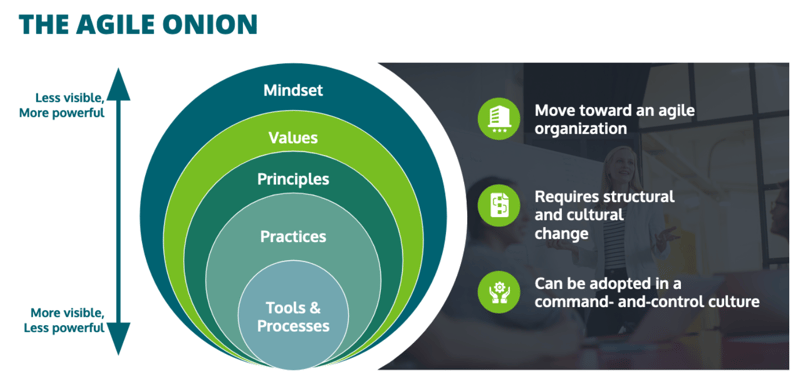
Common example of Agile theater
For example, an Agile stand-up is a short meeting by the team, for the team. In a time frame of 10 to 15 minutes, the core team members sync about progress on initiatives with high organizational impact. Everyone shares blockers that prevent them from making progress. Then, briefly updates the team on their plan for the day.
If this were an example of an Agile theater situation, the stand-up transforms into a daily reporting meeting to upper management that the team begins to dread.
It’s likely to drag on for more than 30 minutes while everyone tries to get in as much information about their work as possible to show how busy they are.
Team leads that practice Agile marketing management, by facilitating process meetings and making sure team members embody Agile values, can prevent Agile practices being just for show.
Agile Marketing Leadership
We hear a lot of recurring phrases in our Agile marketing training. Thee most common is a variation of, “This all sounds great, but are our leaders going to get trained too?”
Individual contributors instantly recognize that all the team-level process improvement in the world won’t make a difference if their bosses aren’t on board.
So bosses, get on board.
I’m talking senior managers, directors, vice presidents, and chief marketing officers alike. Agility is everybody’s responsibility.
Yes, you’re busy and it’s hard to find time to go to a training day. But if you want agility, show up.
Yes, it feels risky to build your own kanban board and show your teams how you’re working on big problems. But if you want enterprise marketing agility, build one.
If you want your marketers to do the hard work of change, you’ve got to lead the charge. They’ll know if you’re not committed, and they won’t be either.
Go Agile in an Agile way
Some of these best practices may feel overwhelming. Changing your team structures, rethinking management styles, adapting your data collection — none of that happens overnight.
But the good news is you can use an Agile approach to adopt Agile ways of working.
Identify first steps, kind of like an MVP, and begin there.
Pilot well and scale intelligently. But, don’t make the mistake of thinking you need to perfectly design your entire Agile transformation from start to finish before you can take your first step.
(Looking for a guide on your transformation path to enterprise marketing agility? Join our Agile Marketing Leadership 8-week virtual course and become a certified Agile leader with the support of our most experienced sherpas.)




